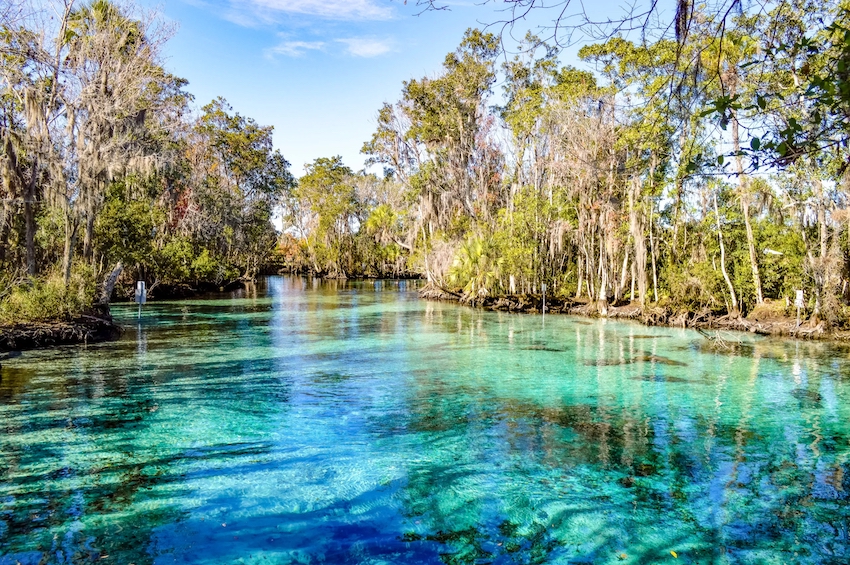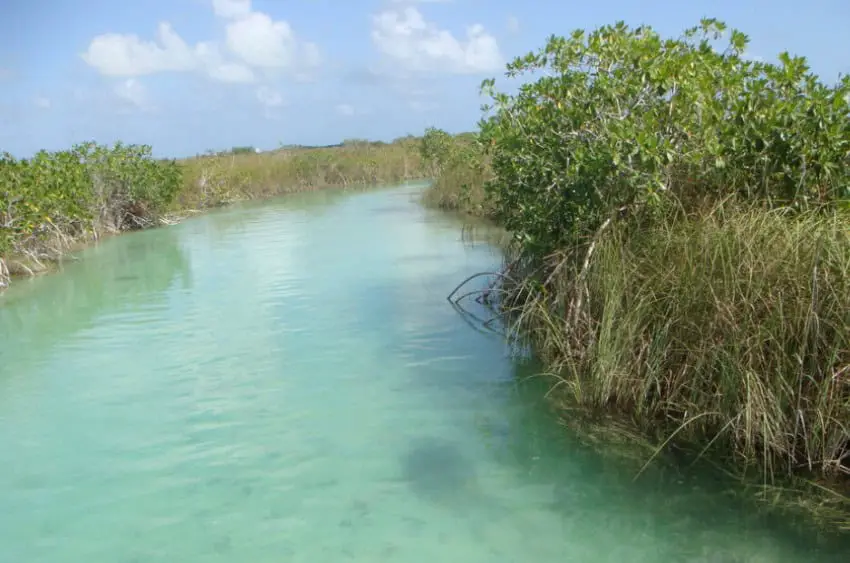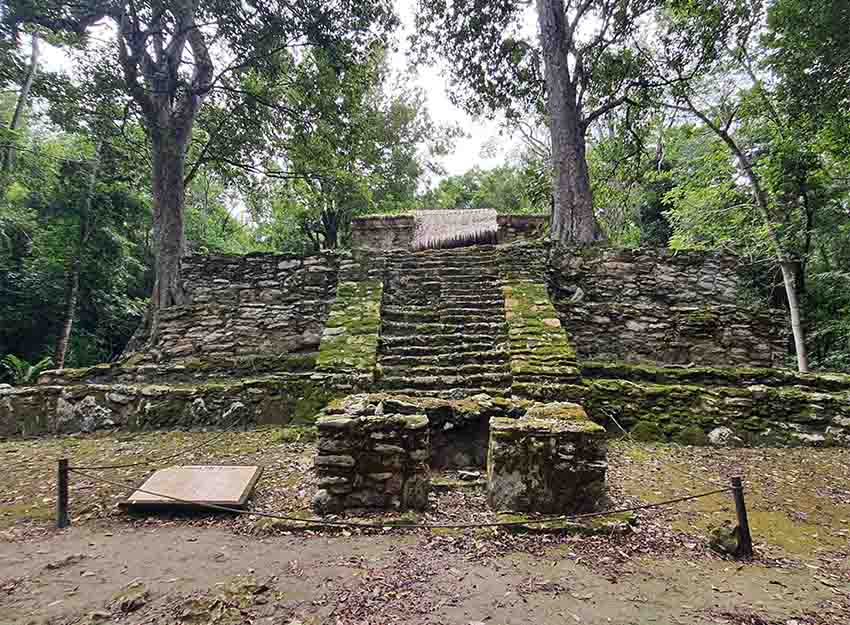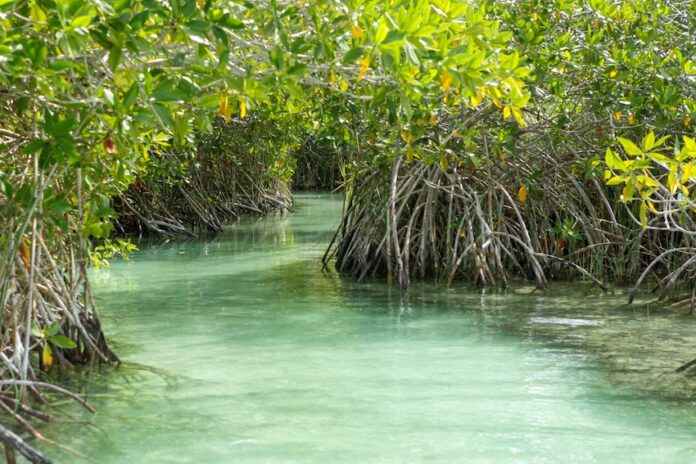Welcome back to the series where we unravel the world-class secrets hidden within Mexico. Each article is our challenge to ourselves to find the wilder and lesser-known experiences here in this global icon, our adopted home of Mexico.
If you’ve ever been drawn to the crystal-clear, turquoise waters of Florida’s natural springs, then get ready to be captivated by Sian Ka’an.

Just a short drive from the hedonistic beaches of Tulum lies a secret world that feels a million miles away. Sian Ka’an, a massive and highly protected nature reserve, is where the jungle meets pristine wetlands and the Caribbean Sea. It’s a place still ruled by nature, where the water is impossibly clear and the silence is only broken by the call of exotic birds.
Few visitors venture beyond Tulum’s beach road to find it, and that’s precisely why I love it. It’s a powerful reminder of the raw, untouched beauty that still exists in Mexico if you just know where to look.
Florida springs vs. Sian Ka’an
Florida’s 700 natural fountains rank among the world’s greatest wonders. To snorkel in Florida’s springs is like taking a weightless flight through an underwater garden shaped by water clear as glass, gnome-like rock formations and aquatic plants. If you’re lucky, you can even spot manatees, otters, loggerhead musk turtles and even alligators that call these springs home.
On land, Florida and Tulum couldn’t seem more different. But dive under the water surface, and you’ll find that Sian Ka’an and Florida’s springs are almost identical, thanks to a remarkable connection hidden deep underground. Both get their stunningly clear, fresh water from massive underground aquifer systems flowing through limestone.
This geological connection is why the Yucatán Peninsula is famous for its cenotes — natural sinkholes that are essentially tunnels into the same kind of subterranean rivers that feed Florida’s springs. The result is the same kind of magic: glassy spearmint freshwater at a refreshing temperature in a natural, lush green setting.
Where the sky is born

Now, let me introduce you properly to Sian Ka’an. In the Mayan language, its name means “origin of the sky” or “where the sky is born.” The moment you see the vast, open wetlands reflecting the clouds, you’ll understand why.
Established as a protected biosphere reserve in 1986 and named a UNESCO World Heritage Site in 1987, it covers a staggering 1.3 million acres of tropical forests, mangroves, marshes and a section of the Mesoamerican Barrier Reef.
This place is a biodiversity hotspot, providing a sanctuary for an incredible array of wildlife. We’re talking jaguars, pumas, tapirs and hundreds of bird species. In the water, you can find manatees, crocodiles, four species of sea turtles and countless fish. It’s a complex, thriving ecosystem where everything is interconnected, from the freshwater channels to the saltwater bays.
The biggest difference between Sian Ka’an and Florida’s springs? Scale and wildness. While Florida’s springs are often beautifully maintained state parks, Sian Ka’an is sprawling and untamed, giving you that same freshwater thrill with an added dose of raw adventure.
Highlights of Sian Ka’an
Because Sian Ka’an is so strictly protected, it’s one of the best-preserved patches of wilderness in Mexico. Visits are only possible on guided tours, which helps to limit the environmental impact we have. There are two main entry points, one through the lagoon side and the other from the ocean, each offering completely different experiences.
For anyone who loves the Florida springs experience, the Muyil entrance to the lagoons of Sian Ka’an is your golden ticket. Located just a 20-minute drive from Tulum, this is the freshwater part of the reserve. Your adventure starts with a walk through the jungle to Muyil ruins, a small, undervisited Mayan archaeological site.

From there, take the boardwalk to get to the lagoons, where local Mayan guides will be ready for you — a boat trip costs around US $50 per person, and all of the fee goes to the Mayan community of Sian Ka’an. You’ll weave through a series of ancient canals hand-dug by the Mayans over a thousand years ago for trade.
And here comes the best part: floating through the ancient Mayan channels. The gentle current will carry you effortlessly through the mangroves for about half an hour. It is pure bliss — peaceful, otherworldly and the closest you’ll get to the lazy river floats of Florida, but with a history behind it.
Flanked by tall reeds and ancient Mayan ruins, these canals feature clear-as-glass water with a perfect sandy floor and tiny fish scuttering about.
Choose your adventure
If your heart is set on experiencing the wild, oceanic side of Sian Ka’an, getting to the remote village of Punta Allen is an adventure in itself. Be warned: the journey is the main obstacle. The 56-kilometer (35-mile) stretch of unpaved road from Tulum is notoriously rough; it requires a grueling, four-hour crawl over countless potholes that can become a muddy mess after the rain.
Trust me when I say a 4×4 vehicle is essential: We drove our Volkswagen Beetle and wrecked the suspension — but we survived!
This challenging journey is your ticket to a truly castaway paradise, where you can spend a few days spotting wild dolphins and manatees, snorkeling on the Mesoamerican reef, experiencing rustic village life and leaving Wi-Fi and phone signals behind.
Thankfully, there are easier options for getting there: Book a guided day tour that includes transfers from your hotel in Tulum and a boat trip from the Sian Ka’an Visitor Center for a full day of adventure; you’ll skip the treacherous drive and have a marine safari with a knowledgeable guide. These all-inclusive trips, typically costing around US $200, handle all the logistics.
A wild heart awaits
Ultimately, the magic of Sian Ka’an lies in its raw, untamed spirit. It offers the same soul-soothing experience that makes Florida’s springs so beloved, but in a wilder, natural setting.
If you’re looking for a place where the water is pure, the history is palpable, and the adventure feels boundless, it’s time for an adventure in Sian Ka’an.
Nellie Huang is a self-proclaimed Mexico-holic obsessed who lived in the Riviera Maya for a few years. She’s the author of Lonely Planet’s Mexico guidebook and has written hundreds of articles on Mexico for various publications. Read about her adventures worldwide on wildjunket.com and follow her updates on Instagram @wildjunket.
